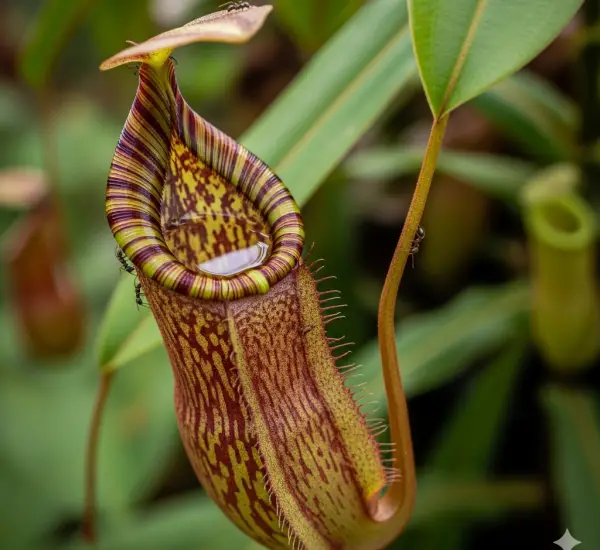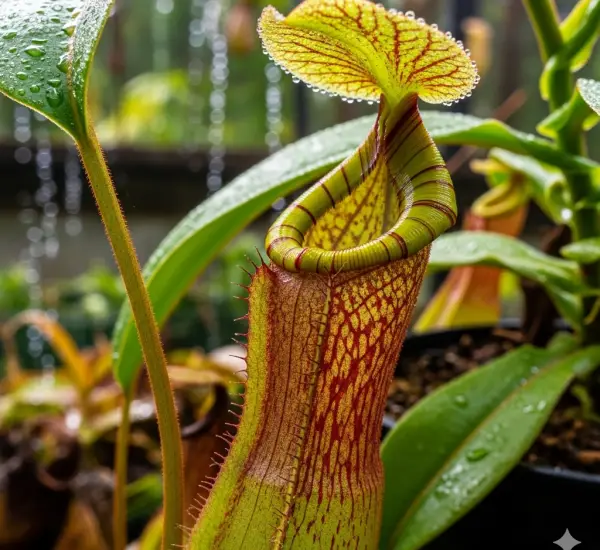Is your favorite plant looking dull, tired, or refusing to bloom? Whether it’s a peace lily, hibiscus, rose, or any other flowering houseplant or garden favorite, there’s a simple natural trick that can give your plants the jolt they need to wake up, rejuvenate, and burst into bloom—all from just one teaspoon of a common household item.
Gardeners have long relied on natural remedies to enhance plant growth, and one of the most impressive discoveries in recent years is the use of Epsom salt as a plant booster. Just one teaspoon of Epsom salt, when applied properly, can trigger dramatic improvements in your plant’s vitality, helping it produce more buds, more blooms, and vibrant foliage—no matter the season.
Let’s explore how this mineral-rich solution works and how you can use it to make almost any plant bloom like never before.
What Is Epsom Salt, and Why Is It Good for Plants?
Epsom salt is a naturally occurring mineral compound made up of magnesium sulfate. Though often used for relaxing baths, it also provides a powerful dose of essential nutrients that many plants crave.
Here’s what each component does:
-
Magnesium (Mg): Vital for chlorophyll production, which helps plants absorb sunlight and convert it into energy. Magnesium also improves flower formation and nutrient uptake.
-
Sulfur (S): Important for overall plant metabolism and enhancing the effectiveness of other fertilizers.
When combined, these minerals stimulate plant growth, improve flowering, and strengthen overall health.
How Epsom Salt Wakes Up Plants
Magnesium deficiency is surprisingly common in both garden and potted plants, especially in sandy or acidic soils. When plants lack magnesium, they may exhibit yellowing leaves, poor growth, or few flowers. Epsom salt corrects this by:
-
Reviving weak or dormant plants
-
Encouraging more flower buds per stem
-
Producing deeper green leaves
-
Boosting resistance to disease and environmental stress
What’s remarkable is how fast the response can be. Many gardeners report visible improvement within a week of application.
How to Use Epsom Salt Correctly
To get the best results, follow this simple guide:
1. For Potted Indoor Plants
-
Dissolve 1 teaspoon of Epsom salt in 1 liter (about 4 cups) of water.
-
Stir until completely dissolved.
-
Water your plant with this solution once every 2 to 4 weeks.
This method works wonderfully for peace lilies, African violets, orchids, and even herbs.
2. For Garden Plants or Larger Flowering Shrubs
-
Mix 1 tablespoon of Epsom salt per gallon of water.
-
Apply around the base of the plant, soaking into the soil.
Alternatively, you can sprinkle the dry salt around the plant (use 1 teaspoon per plant), then water as usual.
3. For Foliar Feeding
-
Mix 1 teaspoon of Epsom salt in a spray bottle filled with a liter of water.
-
Spray directly on the leaves during early morning or evening.
-
Avoid spraying during full sun to prevent leaf burn.
Foliar feeding allows plants to absorb magnesium directly through their leaves for an even faster boost.
Best Time to Apply
Epsom salt is safe to use throughout the year, but you’ll get the best bloom results if you apply it:
-
In early spring – to jump-start growth and flowering
-
Just before blooming seasons – for plants like roses, hibiscus, and orchids
-
After heavy rains – to replenish nutrients washed out of the soil
You’ll notice greener leaves, stronger stems, and more flowers with each cycle.
Caution: Don’t Overdo It
More isn’t always better. Overuse of Epsom salt can throw off the balance of your soil and harm plant roots. Stick to the recommended amounts, and avoid applying it every week unless the plant shows signs of magnesium deficiency.
Bonus: Works on Vegetables and Lawns Too
Epsom salt isn’t just for flowers. You can also use it on:
-
Tomatoes – to prevent blossom-end rot and improve fruit size
-
Peppers – for healthier foliage and more pods
-
Lawns – to boost magnesium levels and deepen the green color
Just sprinkle lightly and water well.
Final Thoughts
If your plants are sluggish or refusing to bloom, don’t rush to buy expensive commercial fertilizers. A simple teaspoon of Epsom salt, used correctly, can revive tired plants, stimulate flowering at every node, and keep your greenery thriving throughout all four seasons.
This natural solution is safe, effective, and remarkably affordable. Try it once—and you may never go back to synthetic boosters again. Whether indoors or out, your plants will thank you with a burst of flowers that lasts year-round.



